Beyond Reykjavik: Discovering the Breathtaking Beauty of Iceland’s South Coast
There’s a lot to see outside Iceland’s capital city Reykjavik and it can be difficult to choose which direction to head – there are amazing landscapes and fun activities all over the country.
During my winter visit to Iceland, I decided to head to Iceland’s south coast – touted by locals as one of the most beautiful parts of Iceland as well as the one of the most accessible.
The south coast is perfect for a road trip. There are dozens of tours on offer ranging from a standard tourist bus that will stop for photos at key spots, or you can be more active and combine south coast sightseeing with activities such as glacier hiking or snowmobiling.
I chose a tour with Extreme Iceland, combining a visit to scenic spots with a glacier hike. The scenic spots can be done easily as an independent road trip, but be warned Icelandic roads can get icy and very slippery during winter. Driving across Iceland in winter is recommended only for motorists used to driving in ice, snow and high winds.
The first stop on my winter visit to Iceland was the beautiful Seljalandsfoss Waterfall, located about a 90 minute drive from Reykjavik.
You can walk up behind the waterfall but be prepared to get wet – and in winter the path is incredibly slippery if it’s snowed recently. Wear flat, waterproof shoes if possible as well as water resistant pants.
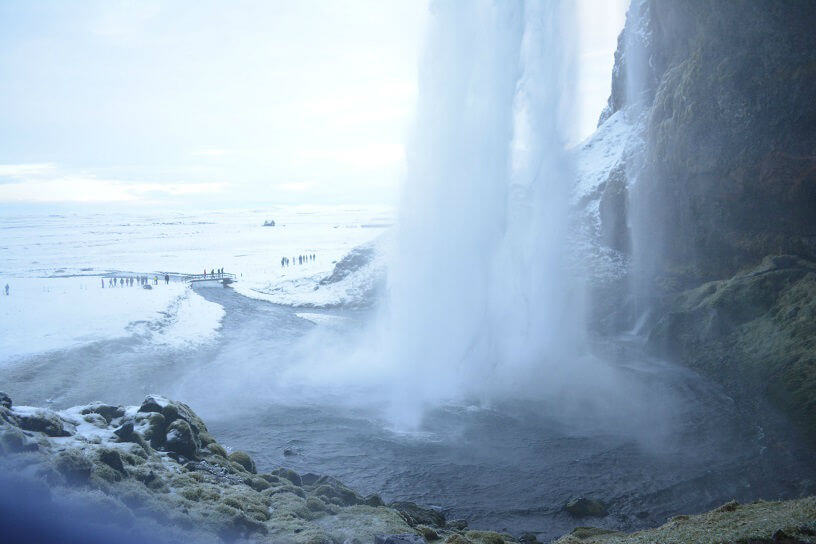
Not far down the road is the Skogafoss Waterfall roaring down into the river below.
Take the time to get the heart pumping and climb the steep stairs to see the waterfall from above and the view out to the ocean.
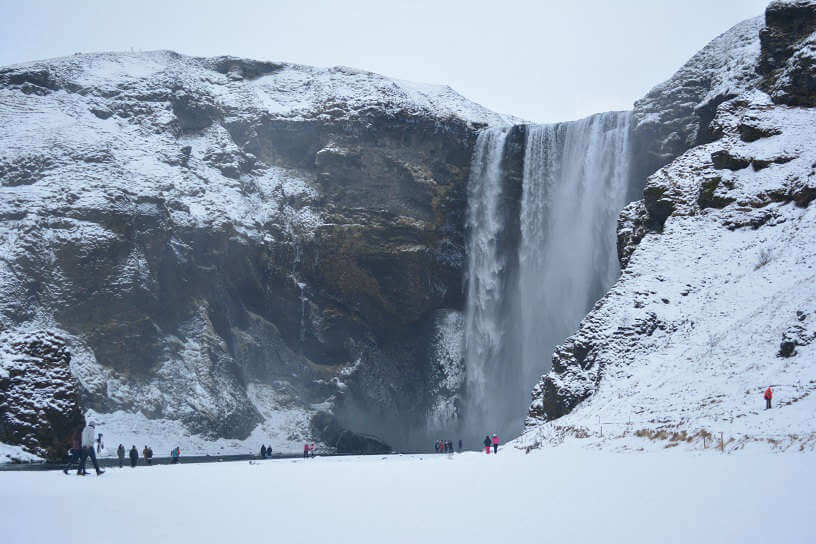
As you drive along the south coast, you’re bound to see Icelandic horses owned by locals ready for a pat, and you’ll see the Eyjafjallajokull volcano. This infamous volcano caused chaos for flights across the world when it erupted in 2010.
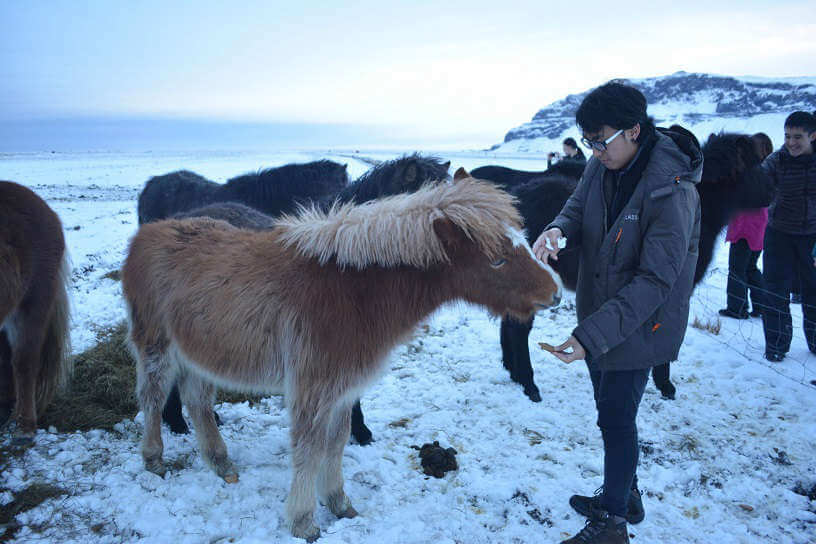
Next up is the black sand beaches near the town of Vik. If you head to the black sand beaches of Vik, stay away from the water. The beaches are very wild and dangerous and there have been tourist drownings before. Our tour guide warned us that there are often large waves powerful enough to knock you off your feet and carry you out.
A good viewpoint of the black sand beaches is from the Dyrholaey headland – where you can look down to the beach and nearby rock formations. Nearby is the Reynishverfi beach dominated by a basalt column cave.
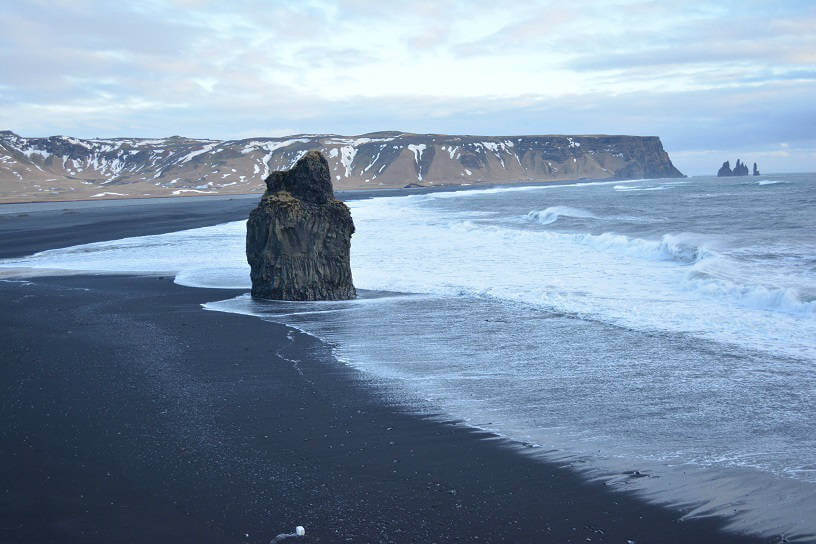
If you’re driving the south coast yourself, Vik is a good central point to base yourself for a night after a day of sightseeing.
My group spent the night near the Jokularson Glacial Lagoon – ready to see the lagoon first up in the dawn.
Seeing ice from the lagoon washed up on the black sand beaches as the sun came up was beautiful and the blue ice was like nothing I’ve seen before.
The Glacial Lagoon is worth a stop and in summer there are boat trips in the lagoon.
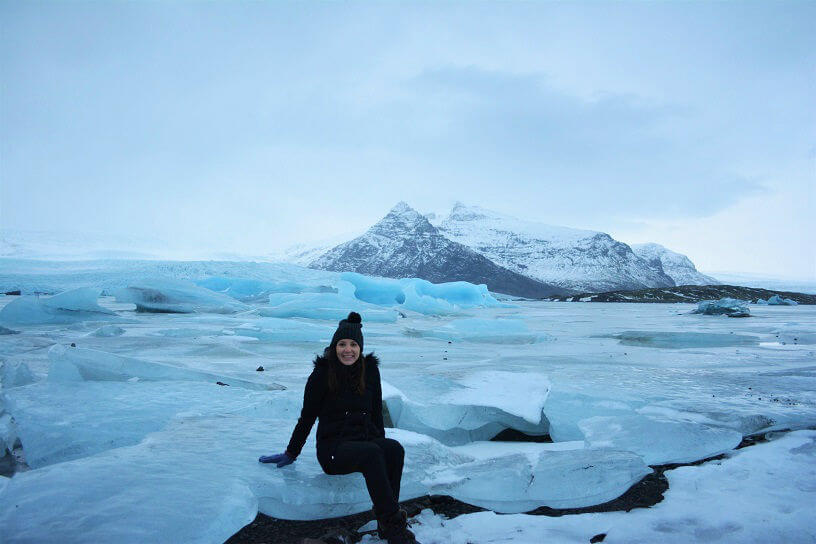
Another attraction on the south coast, though not on many tours, is the wreck of a crashed US Navy plane. It’s accessible by car and I was lucky to get a sunny day a couple of days after snowfall so the roads were clear and dry and I headed out during daylight hours.
The US Navy Super Douglas DC-3 aircraft made a forced landing in November 1973 on the Solheimasandur black sand beach. All on board survived the crash, but the wreck was abandoned and is now a good photo stop.
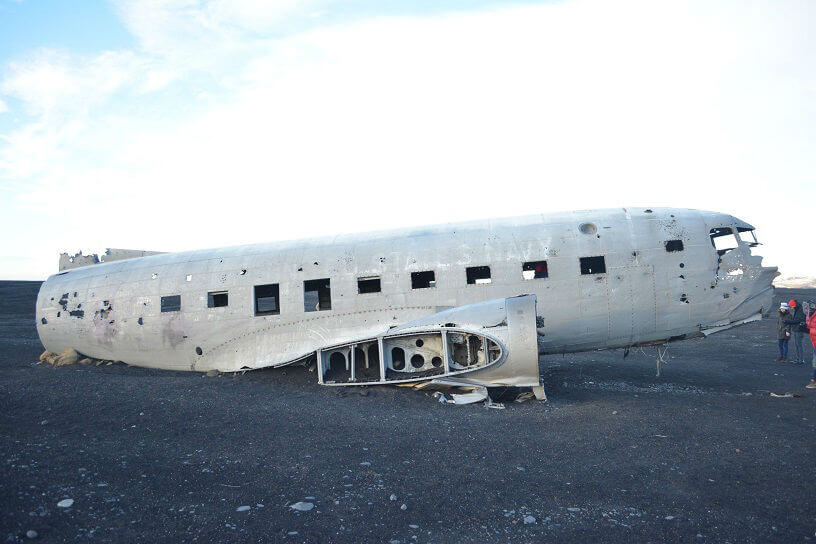
The wreck is located a couple of kilometres past the Skogafoss and Solheimajokull Glacier on a dirt track – look for a gate and a dirt track on your right when coming from Reykjavik, just past the glacier turnoff. If there hasn’t been recent snow, the trail is accessible by 2WD if you take it slow. Keep to the trail on the left when heading in - and keep driving until you see the plane. The plane is hidden behind a dune so you won’t see it until you’re almost on top of it.
Glacier Hike
Hiking on the Vatnajokul Glacier is up there as one of my favourite travel experiences.
The landscape is beautiful and it feels very surreal to walk in the pristine white landscape over ice.
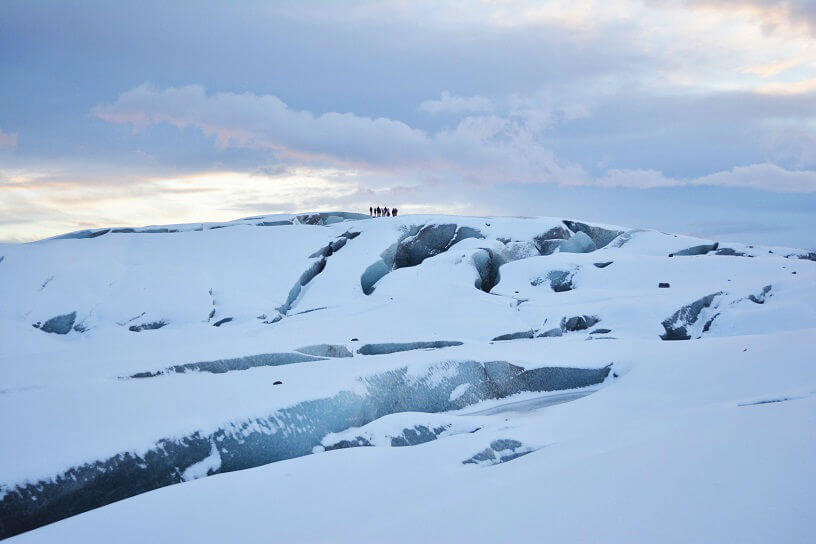
To do the glacier hike, you’re provided with crampons, an ice pick and harness. Hiking on the ice in freezing conditions can be hard work so a reasonable level of fitness is recommended.
The ice pick and harness are only a safety precaution and would only be used if you fell into a crevasse (here’s hoping you don’t!).
A guide leads the way and explains how the glacier was formed and makes sure you stay on the trail away from the dangerous crevasses.
The glacier hike runs for about 90 minutes, but includes lots of photo stops along the way.
The area is breathtaking and the photos don’t really do it justice – it looks like something from another world.
Put glacier hiking on your bucket list now! There a number of glacier hikes on offer throughout Iceland with several run from the south coast glaciers.
Things you should know:
- The roads in Iceland can get very icy and slippery in winter. If you’re not used to driving on snow, ice or in high winds, you would be better off doing a tour. The weather in Iceland during the winter months can change quickly.
- Iceland is expensive. Your wallet will take a hit when booking tours and car hire but you’ll be glad you did it. Eating out can also be expensive. If you’re on a budget, hostels are great as most have cooking facilities.
- Daylight hours during the Icelandic winter are around 11.30am to 4pm.
- Bring layers and thermals to Iceland and a good jacket. Temperatures sit around -2 to 2 degrees most days but there’s often wind chill so it feels colder. Merino wool is great to use as a layer.
- Bring flat soled boots to wear that won’t be ruined if they get wet. Boots with a heel will be useless on the icy footpaths – and you’ll be likely to fall.
Lisa Owen is a pint-sized Australian following her dreams to travel to as many places as she can, and loves to share her photography, travel hacks, hiking adventures, and food discoveries along the way. At last count, she has travelled to more than 40 countries in between working in public relations and discovering hidden gems in Australia's great outdoors.
Instagram: @_thelittleadventurer Facebook: The Little Adventurer Australia
The views, opinions and positions expressed by the author and those providing comments are theirs alone, and are meant as travel inspiration only. They do not reflect the opinions of Cover-More Insurance. You should always read the PDS available from your travel insurance provider to understand the limits, exclusions and conditions of your policy and to ensure any activities you undertake are covered by your policy.
Planning a trip?
Discover Our COVID-19 Cover
To find out what our current* benefits do – and don’t – cover, please read:
Plus, for helpful destination-based COVID-19 information, don't forget to check the COVID-19 Travel Risk Tool before and during travel.
*The cover information contained on the above pages refers to Cover-More policies sold on or after 26 June 2023. For cover information on policies sold prior to this date, please read the relevant PDS.